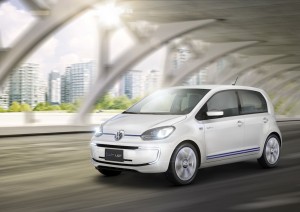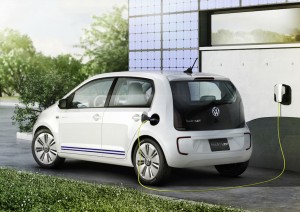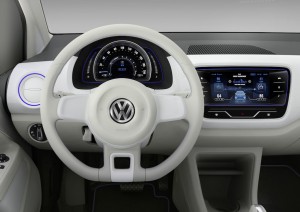
Volkwagen expanded upon its up! two-seater concept to produce the twin up! The plug-in hybrid may find its way to the streets.
Volkswagen is taking its up! concept vehicle up, well, two more seats with the new twin up!.
Debuting at the Tokyo Motor Show, VW’s newest concept vehicle is a plug-in hybrid four-seater that shares parts of its drive system with the XL1, including its diesel engine, electric motor and DSG dual-clutch automatic transmission.
Right now, VW isn’t confirming whether or not it plans to produce the twin up! in large numbers, implying only that it’s somewhere between the research phase and ready for production in large numbers.
The “twin” in twin up! is the fact it can run in electric only mode or switch to its two-cylinder diesel engine at any time, including while in motion. Based off the up!, which seated just two people, it has an electric-only driving range of 31 miles.
In the city, in electric mode, the twin up! accelerates from 0 to 37 mph in 8.8 seconds on its way to a top speed of 78 mph.
In hybrid mode, the car delivers 159 pound-feet of torque, a high number for such a small car. Out of town, the twin up! goes from 0 to 62 mpg in 15.7 seconds and reaches a top speed of 87 mph.
In electric mode, the TDI engine is decoupled from the drivetrain and is shut off. Meanwhile, the clutch on the gearbox side remains closed, and the seven-speed DSG is fully engaged. Provided that the battery is sufficiently charged, the driver can choose when and where the twin up! should be driven electrically by pressing the e-mode button.
Restarting the TDI engine is a smooth and easy process, according to VW. While driving, the electric motor’s rotor is sped up and is very quickly coupled to the clutch in a process known as “pulse starting.” This accelerates the diesel engine to the required speed and starts it, so the driver hardly notices the transition.
However, in the “New European Driving Cycle” – the standard testing and comparison driving cycle for plug-in hybrid vehicles in Europe – the car boasts a fuel economy rating of 214 mpg, which equates to CO2 emissions of just 27 g/km.
Putting the plug-in hybrid system in to the twin up! required little effort since VW now configured its vehicles so they can handle alternative drive systems. The only modification made in the production version was to lengthen the extremely short front overhang by 1.2 inches.
(Volkswagen looks to make mark at L.A. Auto Show with battery cars. For more, Click Here.)
The twin up!’s 55 kW drive unit is made up of a 35 kW (48 PS) 0.8-liter TDI Clean Diesel engine, a 35kW electric motor, a seven-speed DQ200 DSG transmission and power electronics. It is mounted at the front of the car while the “fuel storage system” – an 8.6 kWh lithium-ion battery, a 12-volt battery for the electrical system and an 8.7-gallon fuel tank – are housed in the back under the rear seats and a portion of the trunk.
When the twin up! is braked, the electric motor operates as a generator; its braking energy is used to charge the battery under regeneration. In certain operating conditions, the load of the TDI engine can be shifted so that it operates at its most favorable efficiency level. The gears in the DSG transmission are also always selected with the aim of minimizing energy usage.
(Click Here to see how VW continues to grow globally.)
The engine controller regulates the entire energy and drive management system based on the specific load demanded by the driver. Parameters flowing into this control system include the accelerator or e-pedal position, engine load, energy supply and mix of kinetic and electric energy, so that the system always uses the optimal type of propulsive power.
The hybrid module is located between the TDI engine and the seven-speed DSG transmission and consists of an electric motor and a clutch, integrated in the DSG housing in place of the usual flywheel. The electric motor is supplied with energy from the 8.6 kWh lithium-ion battery.


